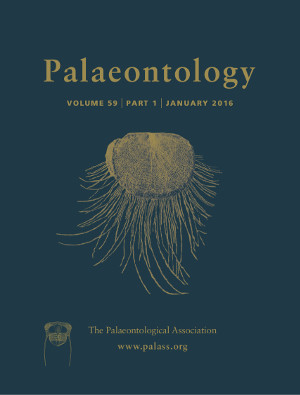Reg. Charity No. 1168330

The taxonomic significance of the morphological variability present in the genus Ptychomya Agassiz has remained obscure due to inadequacy of the traditional qualitative approach to account for complex patterns of variation. In this work, we focus on solving the distinction between intra- and interspecific variability in Ptychomya from Hauterivian marine beds of the Neuquén Basin (west-central Argentina), a longstanding and unresolved palaeontological issue, using the quantitative framework provided by geometric morphometrics and multivariate statistics. The species Ptychomya koeneni Behrendsen and several subspecies had been recognized in the studied succession by former authors based on qualitative morphological descriptions. We tested two hypotheses: (1) that there exist morphological discontinuities between hypothesized species that mark their boundaries; and (2) that morphology follows a pattern of geographical variation, suitable for recognition of subspecies. We find two morphological groups in the studied sample, with a significant morphological gap between them, supporting the idea that there are at least two species in the studied succession, Ptychomya cf. koeneni and Ptychomya coihuicoensis Weaver. On the other hand, we found no correspondence between morphological and geographical distributions, leading to the conclusion that the named subspecies are invalid taxa. This study highlights the potential of this methodological approach for solving the taxonomy of this notorious genus of pandemic distribution during the Cretaceous.